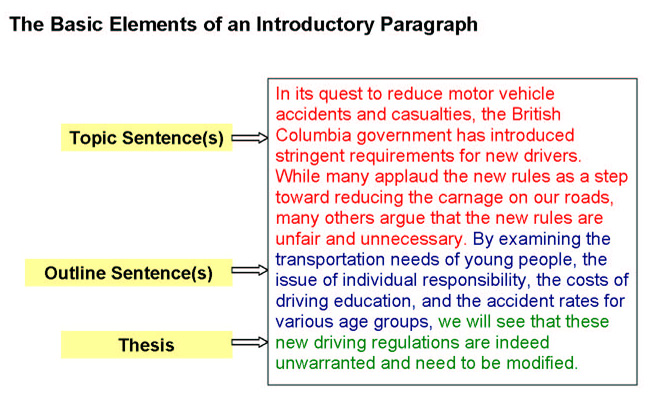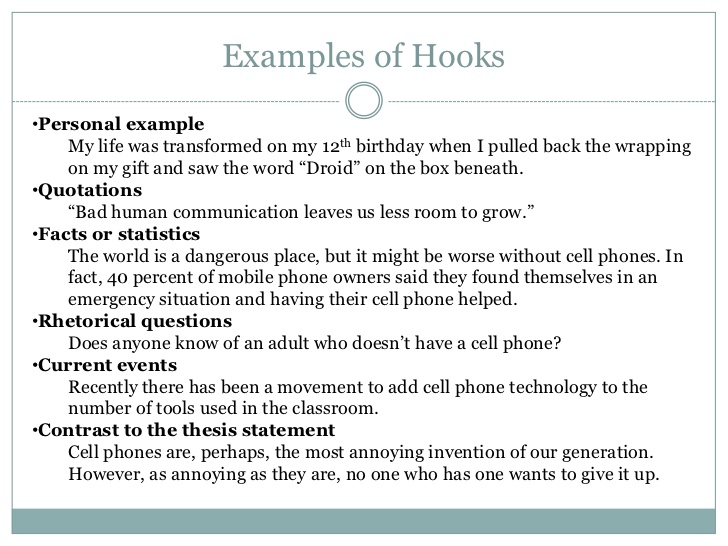General Essay Writing Tips
Despite the fact that, as Shakespeare said, “the pen is mightier than the sword,” the pen itself is not enough to make an effective writer. In fact, though we may all like to think of ourselves as the next Shakespeare, inspiration alone is not the key to effective essay writing. You see, the conventions of English essays are more formulaic than you might think – and, in many ways, it can be as simple as counting to five.
The Five Paragraph Essay
Though more advanced academic papers are a category all their own, the basic high school or college essay has the following standardized, five-paragraph structure:
Paragraph 1: Introduction
Paragraph 2: Body 1
Paragraph 3: Body 2
Paragraph 4: Body 3
Paragraph 5: Conclusion
Though it may seem formulaic – and, well, it is – the idea behind this structure is to make it easier for the reader to navigate the ideas put forth in an essay. You see, if your essay has the same structure as every other one, any reader should be able to quickly and easily find the information most relevant to them.
The Introduction
The principle purpose of the introduction is to present your position (this is also known as the “thesis” or “argument”) on the issue at hand but effective introductory paragraphs are so much more than that. Before you even get to this thesis statement, for example, the essay should begin with a “hook” that grabs the reader’s attention and makes them want to read on. Examples of effective hooks include relevant quotations (“no man is an island”) or surprising statistics (“three out of four doctors report that…”).
Only then, with the reader’s attention “hooked,” should you move on to the thesis. The thesis should be a clear, one-sentence explanation of your position that leaves no doubt in the reader’s mind about which side you are on from the beginning of your essay.
First impressions are so important. How many times have you heard that? It is true that the first impression—whether it’s a first meeting with a person or the first sentence of a paper—sets the stage for a lasting opinion.
The introductory paragraph of any paper, long or short, should start with a sentence that piques the interest of your readers.
In a well-constructed first paragraph, that first sentence will lead into three or four sentences that provide details about the subject or your process you will address in the body of your essay.
Following the thesis, you should provide a mini-outline which previews the examples you will use to support your thesis in the rest of the essay. Not only does this tell the reader what to expect in the paragraphs to come but it also gives them a clearer understanding of what the essay is about.
In summary, your introductory paragraph should contain the following:
- an attention-grabbing first sentence
- informative sentences that build to your thesis
- the thesis statement, which makes a claim or states a view that you will support or build upon
Your First Sentence
To get your paper off to a great start, you should try to have a first sentence that engages your reader. Think of your first sentence as a hook that draws your reader in. It is your big chance to be so clever that your reader can’t stop.
As you researched your topic, you probably discovered many interesting anecdotes,quotes, or trivial facts. This is exactly the sort of thing you should use for an engaging introduction.
Consider these ideas for creating a strong beginning.
Surprising fact: The pentagon has twice as many bathrooms as are necessary. The famous government building was constructed in the 1940s, when segregation laws required that separate bathrooms be installed for people of African descent. This building isn’t the only American icon that harkens back to this embarrassing and hurtful time in our history. Across the United States there are many examples of leftover laws and customs that reflect the racism that once permeated American society.
Humor: When my older brother substituted fresh eggs for our hard-boiled Easter eggs, he didn’t realize our father would take the first crack at hiding them. My brother’s holiday ended early that particular day in 1991, but the rest of the family enjoyed the warm April weather, outside on the lawn, until late into the evening. Perhaps it was the warmth of the day and the joy of eating Easter roast while Tommy contemplated his actions that make my memories of Easter so sweet. Whatever the true reason, the fact is that my favorite holiday of the year is Easter Sunday.
Quotation: Hillary Rodham Clinton once said that “There cannot be true democracy unless women’s voices are heard.” In 2006, when Nancy Pelosi became the nation’s first female Speaker of the House, one woman’s voice rang out clear. With this development, democracy grew to its truest level ever in terms of women’s equality. The historical event also paved the way for Senator Clinton as she warmed her own vocal chords in preparation for a presidential race.
Finding the Hook
In each example, the first sentence draws the reader in to find out how the interesting fact leads to a point. You can use many methods to capture your reader’s interest.
Curiosity: A duck’s quack doesn’t echo. Some people might find a deep and mysterious meaning in this fact …
Definition: A homograph is a word with two or more pronunciations. Produce is one example …
Anecdote: Yesterday morning I watched as my older sister left for school with a bright white glob of toothpaste gleaming on her chin. I felt no regret at all until she stepped onto the bus …
Supporting Sentences
The body of your introductory paragraph should fulfill two functions: it should explain your first sentence and it should build up to your thesis statement. You’ll find that this is much easier than it sounds. Just follow the pattern you see in the above examples.
End With a Good Beginning
Once you complete a first draft of your paper, go back to re-construct your introductory paragraph. Be sure to check your thesis statement to make sure it still holds true—then double check your first sentence to give it some zing.
Finally, designing the last sentence in this way has the added benefit of seamlessly moving the reader to the first paragraph of the body of the paper. In this way we can see that the basic introduction does not need to be much more than three or four sentences in length. If yours is much longer you might want to consider editing it down a bit!
Here, by way of example, is an introductory paragraph to an essay in response to the following question:
“Do we learn more from finding out that we have made mistakes or from our successful actions?”
“No man is an island” and, as such, he is constantly shaped and influenced by his experiences. People learn by doing and, accordingly, learn considerably more from their mistakes than their success. For proof of this, consider examples from both science and everyday experience.”
 DO – Pay Attention to Your Introductory Paragraph
DO – Pay Attention to Your Introductory Paragraph
Because this is the first paragraph of your essay it is your opportunity to give the reader the best first impression possible. The introductory paragraph not only gives the reader an idea of what you will talk about but also shows them how you will talk about it. Put a disproportionate amount of effort into this – more than the 20% a simple calculation would suggest – and you will be rewarded accordingly.
DO NOT – Use Passive Voice or I/My
Active voice, wherein the subjects direct actions rather than let the actions “happen to” them – “he scored a 97%” instead of “he was given a 97%” – is a much more powerful and attention-grabbing way to write. At the same time, unless it is a personal narrative, avoid personal pronouns like I, My, or Me. Try instead to be more general and you will have your reader hooked.
Some Examples how to write Introductory Paragraphs or formulate thesis statements !


Look above for an example of an introductory paragraph for the “Your secret talent” essay using a quotation for the grabber.
Remember that the introductory paragraph is the reader’s first glimpse of you and your topic. You want to make a good impression.
Try writing a grabber for your essay.
Decide if you need a transitional sentence.
Add the thesis statement that you’ve written.
Again, try to be flexible as you work through this process. If your topic, major points, or thesis aren’t working for you, don’t hesitate to rework or revise them as necessary.
We would greatly appreciate your detailed feedback to help serve you better. If you have any questions or ambiguities our teachers are here to help you out. Just post your questions and you will get a reply from our teachers. Thank you!



